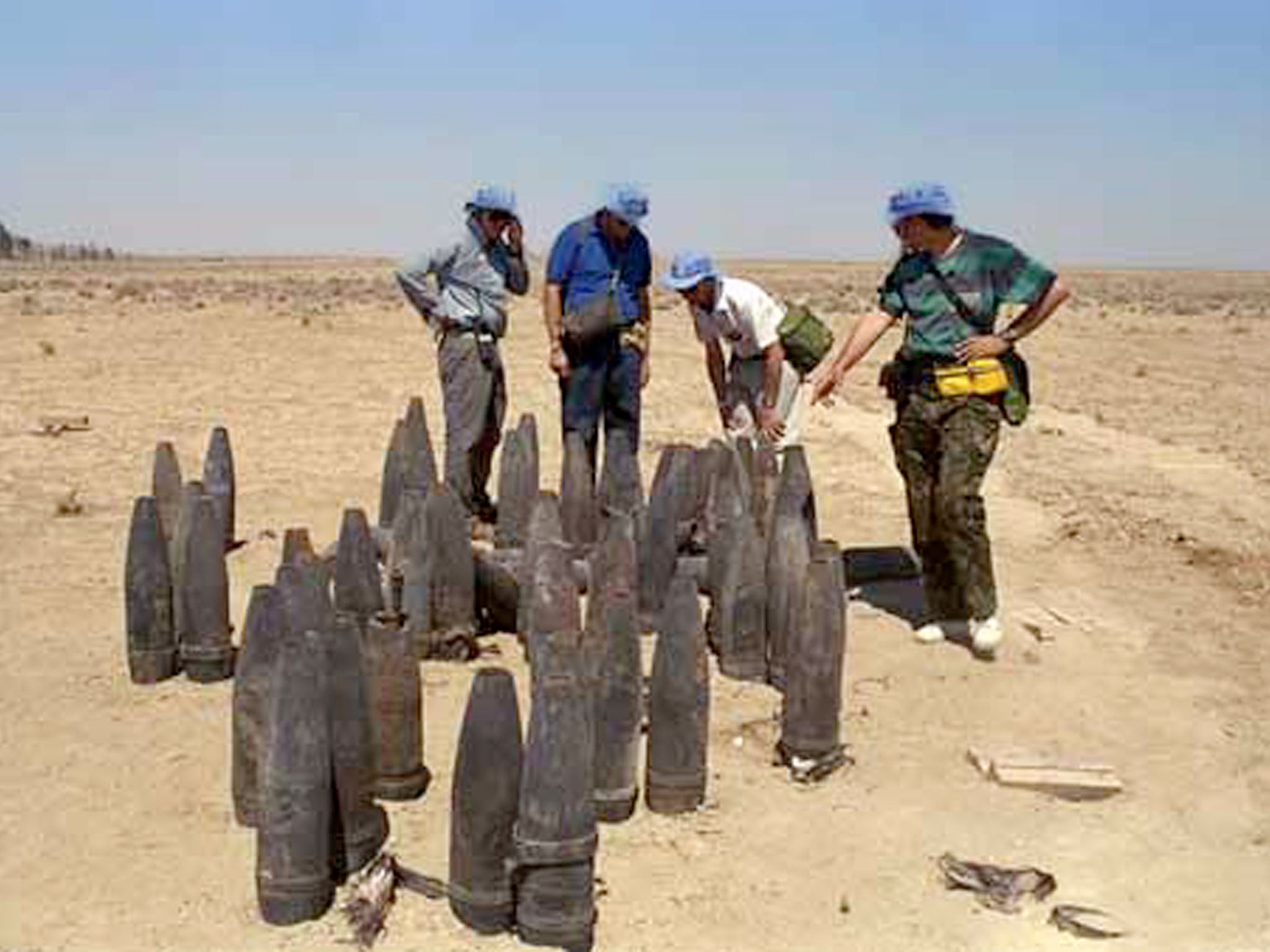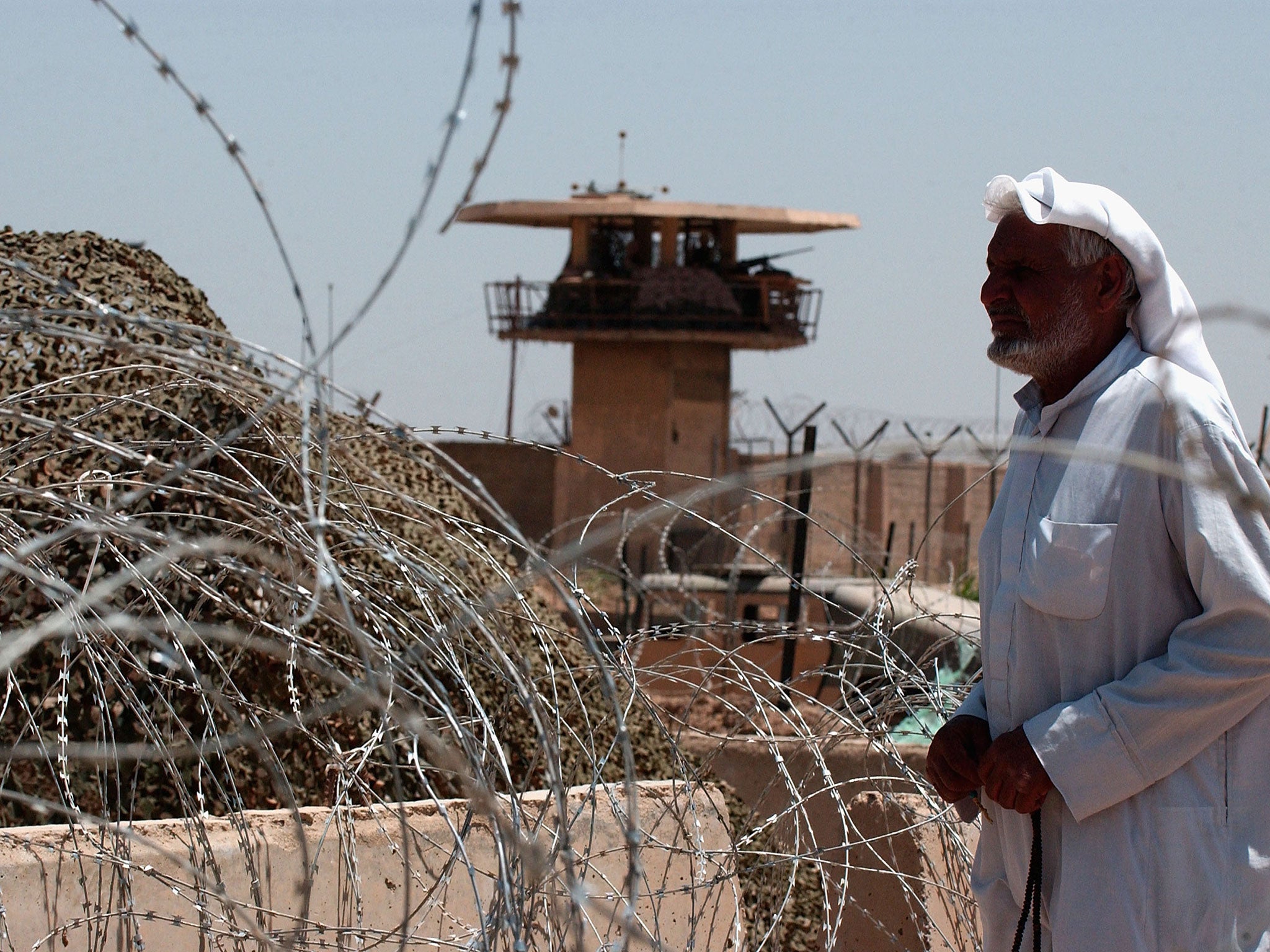Chilcot report: How Tony Blair and George W Bush's 'liberation' of Iraq backfired
Unfortunately, the launch of the invasion in March 2003 did not mark the end of the mistakes and misjudgements

Your support helps us to tell the story
From reproductive rights to climate change to Big Tech, The Independent is on the ground when the story is developing. Whether it's investigating the financials of Elon Musk's pro-Trump PAC or producing our latest documentary, 'The A Word', which shines a light on the American women fighting for reproductive rights, we know how important it is to parse out the facts from the messaging.
At such a critical moment in US history, we need reporters on the ground. Your donation allows us to keep sending journalists to speak to both sides of the story.
The Independent is trusted by Americans across the entire political spectrum. And unlike many other quality news outlets, we choose not to lock Americans out of our reporting and analysis with paywalls. We believe quality journalism should be available to everyone, paid for by those who can afford it.
Your support makes all the difference.The invasion of Iraq by a military coalition made of the US, Britain, Australia and Poland, which began two days after that Parliamentary vote, was over so soon that it almost vindicated the view expressed a year earlier by a former White House adviser, Kenneth Adelman, that “demolishing [Saddam] Hussein's military power and liberating Iraq would be a cakewalk.” It took just 20 days for US troops to enter Baghdad, on 9 April. British troops entered Basra, in the south, three days earlier, on 6 April. Saddam's vicious sons, Uday and Qusay, were killed in a gun battle in Mosul on 22 July. Saddam himself managed to evade capture for nine months, until his underground hideout was uncovered on 13 December. Taken alive, he was put on trial in Baghdad, and hanged on 30 December 2006.
Follow our latest updates on the Chilcot report
The swift victory and the images of exuberant crowds tearing down Saddam's vast statues went down well with the British public, giving Tony Blair what was termed a “Baghdad bounce”. During the controversy that preceded the invasion, his “satisfaction rating” had fallen to just above 30 per cent, its lowest point in his first nine years as Labour leader. By mid-April, his rating had bounced to 49 per cent. An opinion poll for The Times showed that 64 per cent believed he had been right to take military action.
But one big question hung over him: where were Saddam's weapons of mass destruction? As soon as the military situation had stabilised, an Iraq Survey Group made up of 1,400 Americans, Britons and Australians was set to work, searching Iraq's vast land mass for the elusive WMDs. The fact that they did not find anything immediately was no cause for alarm: in a country the size of France there were any number of places where weapons could be hidden.
One of the war's most prominent opponents, the Liberal Democrat foreign affairs spokesman Menzies Campbell, now admits that he spent several nervous weeks dreading the moment when the ISG announced that it had uncovered a huge stash of chemical weapons, thereby delivering a body blow to the case against the war. I personally remember being asked by one Tony Blair's special advisers: “Why is the left making so much noise about WMDs? When the weapons turn up, they won't have an argument left.”
But they never turned up. The head of the ISG, David Kay, resigned in January 2004, saying he did not believe they ever would. By the time of the Labour annual conference in October 2003, Tony Blair needed to explain to party delegates why he appeared to have taken British troops to war on the basis of false information. “Imagine you are PM and you receive this intelligence,” he said. “And not just about Iraq, but about the whole murky trade in WMD. And one thing we know, not from intelligence, but from historical fact – that Saddam's regime has not just developed but used such weapons gassing thousands of his own people ... So what do I do? Say, 'I've got the intelligence but I've a hunch it's wrong'?”

It was not just the absence of WMDs that turned public opinion against the war. The British death toll during the actual fighting had been relatively light. Of the 30 who had died up until the capture of Basra, there were more casualties from accidents than from enemy action. Eight were killed in an air accident on 21 March, the second day of the war, and six in another accident the next day. The first to be killed by Iraqis were an army sergeant, Simon Cullingworth, and a sapper, Luke Allsop, who were caught in an ambush, taken to a military compound and shot. Two Iraqi intelligence officers were later charged with murdering them.
But the death toll continued to rise after the fall of Saddam had raised hopes that it might end: altogether, 179 British military personnel died in Iraq between 2003 and 2009, more than 80 per cent of them after Basra had been captured.
What caused particular resentment among Army families was that some of the equipment supplied to their soldiers was faulty or inappropriate for desert conditions. The results were sometimes fatal.
Jason Smith, a 32-year-old private in the Territorial Army, died in the southern Iraqi city of Al Amarah in August 2003 from heat stroke. An inquest found that the Army had stationed his battalion in an old athletics stadium where there was no mains electricity, running water or air conditioning, and had issued guidelines for coping with the kind of heat they might experience on “Salisbury Plain, not Al Amarah”. The temperature was so high on the day he died that one soldier described frying an egg on the bonnet of a Land Rover.
On 9 August 2007, two soldiers from the 1st Battalion Irish Guards, Chris Casey and Kirk Redpath, were killed when their Land Rover was hit by a home-made explosive on the road between Kuwait and Basra. Their platoon commander had asked for more heavily protected vehicles, but they were all in use. Kirk Redpath was just 22. His family later took the Government to court for abusing his civil rights by not protecting him.
Another issue was that the US and British governments had been so focused on winning public support for the war and preparing the invasion that they appeared to have no clear idea of what they would do with this country they had now conquered.
The US government had decided that just as Germany was “de-Nazified” after 1945, so there had to be a “de-Ba'athification” of Iraq. The US General Tommy Franks announced the dissolution of the Ba'ath Party a week after the capture of Baghdad. However, in the chaos and looting that followed the arrival of US troops, the party's membership records vanished, so the occupying authorities had no accurate way of telling who had been in the party or at what level. General Jay Garner, in charge of the Office of Reconstruction, consequently trod carefully, provoking complaints from returning Iraqi exiles that too many of Saddam's collaborators were still in post.
On 12 May, the US Ambassador, Paul Bremer, arrived in Baghdad with orders to speed up the de-Ba'athification. Any Iraqi who had been in one of the four highest levels of the Ba'ath party, or had held one of the three highest levels in the administration and had been a party member at any level, was to be sacked..
The fault with this policy was that while Germany had been ruled by the Nazis for 12 years, before which it had been a functioning democracy, Iraq had been under Ba'ath rule for 35 years, before which there was chaos. Outside the Ba'ath party there was almost no one with government experience in Iraq.
The US was relying heavily on a wealthy Shia named Ahmad Chalabi, who had helped found the Iraqi National Congress in exile in 1992. The INC had received millions of dollars from Washington, and was busy for years feeding information to the CIA. There were high hopes about his role in post-Saddam Iraq. Then, in May 2004, Chalabi's offices were raided by Iraqi police, aided by US troops, because he was suspected of fraud.
The charges were thrown out by the Iraqi court, and Chalabi later became deputy prime minister, in 2005. None the less, it was an inauspicious start to Iraq's era of post-Saddam government, and the country has struggled with issues of government credibility ever since.
Having condemned the brutality of the old regime, the US military also failed to take into account what their own service men and women might do when Iraqi prisoners fell into their hands. In January 2004, the Americans quietly suspended the general in charge of Abu Ghraib, Baghdad's main prison. An investigation began into what had been happening there in the latter months of 2003. It turned up evidence of “sadistic, blatant and wanton criminal abuses”, to quote a report by General Antono Taguba, the head of the investigation. This included beating and abusing naked prisoners, threatening to set dogs on them, threatening them with rape, and in one case sodomising a detainee with a chemical light, and also possibly with a broom handle. The torturers, from the US 372nd Military Police Company, enjoyed this activity so much that they took trophy photographs.

Neither the photographs nor the report were intended for publication, but they were leaked. The pictures, first shown on CBS in May 2004, were seen around the world. One that caused particular shock was the elfin figure of Private Lynndie England, a cigarette dangling from her mouth, giving a jaunty thumbs up as she pointed at the genitals of a young Iraqi male who was naked but for a sandbag over his head. In another photograph, she and an officer named Charles Graner were seen grinning next to seven naked Iraqis who had been piled in a pyramid. Although the offenders were prosecuted, as Tony Blair observed in his memoirs: “The damage was colossal. For those always opposed to the action, the photographs were a heaven-sent opportunity to blacken the name of the US.”
Another obvious factor that seemed to have passed Washington and London by was that Iraq is a mostly Shia country that had been ruled for centuries by Sunnis. One of the first problems facing the occupying authorities was the sudden but unsurprising appearance of pro-Iranian Shia militia. In January 2005, Iraq had its first free election in more than half a century, which brought more than eight million to the polls and which inevitably resulted in a government dominated by Shia.
Given Tony Blair's experience of Northern Irish politics, he might have been expected to foresee that the Sunni minority would not welcome Shia rule. Resentment flared into violence, which bred retribution, which bred more violence.
No one knows the exact number of Iraqis killed by war, sectarian conflict and civil war since the invasion. The website Iraq Body Count, which tries to keep a tally of specific victims, reckons conservatively that the civilian death toll is at least 160,000 and could be as high as 179,000. Add in combatants and the death toll is at least 251,000.
As Tony Blair emphasised in his memoirs, no one knows what the death toll would have been if Saddam had remained in power for life, to be succeeded, presumably, by one of his homicidal sons. Even so, the tally is grim.
Join our commenting forum
Join thought-provoking conversations, follow other Independent readers and see their replies
Comments